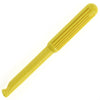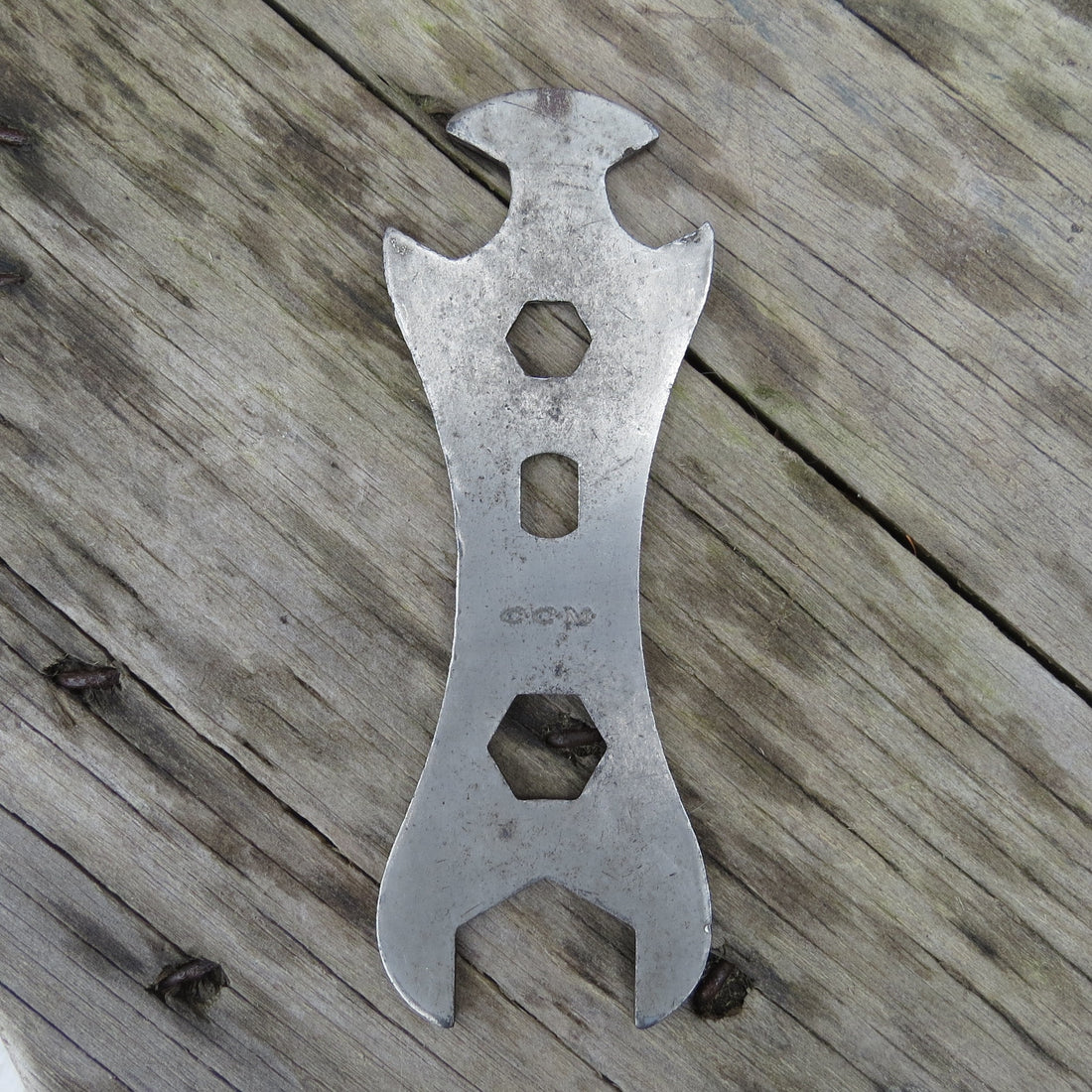Over the past year I acquired four vintage CCM multi-functional wrenches. At first I seen these as cool vintage pieces of bicycle maintenance history. But the more I thought about these wrenches the more their utility became evident. They stopped being an artefact of another time and took on the role of workshop sage; it seemed they had something to tell me.

Each one, some time ago, was the mainstay shop and road side repair tool for someone and their bicycle. The rider’s best friend in a time of need, when their bicycle didn’t work the way it should.
As they sat on my work bench waiting to be cleaned for sale or use, I found myself working away on bicycles of the same vintage. I was reaching for 13, 14,15, 17 and 30 mm wrenches. Hardly a hex/allen key was lifted. On more recent bicycles with calliper brakes smaller wrenches (9, 10, 11 mm) were used. But on the three speed and single speeds with coaster brakes it was the larger sizes that were used almost exclusively. The sizes included with the CCM “one-wrench”.
This CCM wrench measures 150mm long and 35mm wide. Here’s what is has:

It then occurred to me that if the owner of a vintage bicycle went to a bicycle shop to buy a multi-tool for road repair, chances are they would leave with a costly and useless tool. Modern multi-tools typically include a few smaller sized sockets, allen keys, flat/Philips head driver and the more expensive ones, a chain tool. (A broken chain, especially 1/8” chain, is rare.) Very few modern multi-tools could be used to adjust or repair a coaster brake bicycle or three speed. You wouldn’t even be able to loosen the axle nuts to repair a flat. And axle nuts aren’t uncommon on entry level modern bicycles!
In my experience, you are most likely to encounter a loose pedal, stem, headset, seat or seat post and flat tires while out riding. These repairs are a greater cause for concern or could cause you to walk home more so than other minor problems like misaligned derailleurs. Some of these issues can be remedied on newer bicycles by a quick release skewer or the turn of an allen key. However, others, like tightening a pedal, still require a wrench.
When I decided to use the CCM one-wrench I did notice some limitations. It is not the most ergonomic of devices, but for an emergency repair that is not critical. The sizing is a bit off. It may the difference between the metric and SAE sizing differences but on my SAE 1967 CCM Rambler the fit is still not snug. It works but the likelihood of stripping a nut is real. The metal is also soft. This leaves the opportunity for some entrepreneur to design a suitable well made, ergonomic, snug fitting mulit-wrench for vintage bicycles.
In the meantime it is important for vintage bicycle owners to realize that in order to be road repair ready they will need to carry an assortment of wrenches; including a 15, 14 and 13 mm wrench. A (30mm) wrench to tighten the set head is a good tool to have on hand but may not be practical for this one purpose. (I really like this inclusion on the CCM one-wrench.)
 You will need a (mini) pump and tire levers. I fell in love with the Quik Stik® tire lever. It is strong and has lots of leverage, especially for tight fitting tires. A patch kit (be sure to know how to patch) or a tube in the correct size will complete the kit. If the bicycle has cable elements (calliper brakes and derailleurs) then an appropriate headed screwdriver and smaller wrenches (or sockets) such as 8, 9, 10 mm are good to have. A final note for pedals is to ensure your 15 mm wrench will fit into the crevice between the crank arm and pedal body. Some wrench heads are too thick for this application.
You will need a (mini) pump and tire levers. I fell in love with the Quik Stik® tire lever. It is strong and has lots of leverage, especially for tight fitting tires. A patch kit (be sure to know how to patch) or a tube in the correct size will complete the kit. If the bicycle has cable elements (calliper brakes and derailleurs) then an appropriate headed screwdriver and smaller wrenches (or sockets) such as 8, 9, 10 mm are good to have. A final note for pedals is to ensure your 15 mm wrench will fit into the crevice between the crank arm and pedal body. Some wrench heads are too thick for this application.
The often mentioned drawback to carrying wrenches is the additional weight. I find this concern a moot point as it is small considering the weight of the bicycle and rider. These are also the tools that are required regardless of weight.
The Point of this Story…
is to be sure you know what tools you need to fix YOUR bicycle. Find the best you can afford, learn how to use them and be sure to take them with you when you ride.
Take care, Daryl

